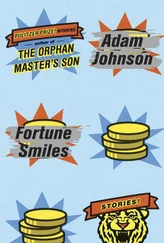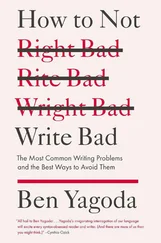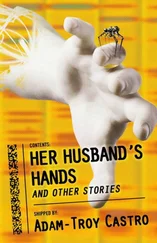…………………….
A New York Abstract Expressionist who had moved alone in 1951 to the hills of North Carolina intended to produce a painting that would express everything he had to say about his father, and thus exhaust a theme that had sustained his early career but which, certain reviewers had begun carping, and he agreed with them, was artistically limiting, art-historically overworked, and fundamentally juvenile. One final painting, expressing everything there was to express about his father, and then he could finally move on, probably to political, racial, religious, sexual, or existential themes, if not straight to the Holocaust.
He stretched his canvas, dipped his brush, and began painting.
He anticipated, at first, an exceptionally simple painting: only a simple painting could possess the generality needed to encompass his father completely, to sum him up and thereby exhaust him. Just a few brushstrokes, he thought, and I’ll be done.
But the resulting painting was too simple. It left out too much. It represented only one aspect of his father, one perspective on his father. He would need more brushstrokes, he realized, potentially a huge or even a shocking number of brushstrokes. I’ll probably need, he said to himself, a disturbing or distressing number of brushstrokes, if I intend to exhaust my father as a theme and move on to politics, race, religion, sex, or existence, if not the Holocaust.
These new brushstrokes he began putting down in a frenzy, expressing, with a feeling of indescribable relief, more and more aspects of his father, from more and more perspectives, incrementally capturing his quintessence and exhausting him as a theme of any interest to the son. He layered stroke on stroke, color on color, and the painting took on a homogenous brown hue. He felt, as the painting became browner and browner, that his father was becoming gradually less interesting to him, and this he saw as a good sign. But he had to be careful! Less interesting was good but the painting wasn’t finished until his father was of absolutely no interest to him at all — until his father was exhausted.
So, a couple months later, when a collector stopped by his studio up there in the Blue Ridge Mountains and offered him an enormous sum for the little canvas called My Father —by then a brownish, blackish square which, the very insecure collector proudly observed, was obviously indebted to Malevich — the artist turned him down, on the grounds that the painting wasn’t finished yet.
He applied more brushstrokes, each one exhausting his father as a theme marginally more, until the painting was pitch-black. But his father, as a theme, was still not exhausted! So he continued to put down brushstrokes, capturing hitherto hidden aspects of his father from hitherto unconsidered angles, until the painting, through a complicated impasto technique of his own devising, began to protrude from the canvas and advance, as it were, toward the opposite wall of the studio, about thirty feet away, a black beam that exhausted his interest in his father little by little as it inched across the room at approximately eye level. The undeniably phallic nature of this new development proved irresistible to the painter’s former friends, among them some of New York’s most mediocre wits, who couldn’t help but say things like, “I hear Podolsky”—for this was the painter’s name—“I hear Podolsky is down there in the hills of North Carolina building a big black penis with which to express his father’s essence,” or, when they learned to their intense delight that the beam had grown precarious enough to require the support of three straps slung from the ceiling, “By strapping that big black penis to the ceiling Podolsky enables himself to continue articulating his father’s essence.”
He knew he was being mocked. And he mocked himself. From a 1962 letter to a sympathetic colleague in New Mexico: “You paint the same black beam, day in and day out, and after a year it’s only grown a foot, and the total length of the black beam is nine feet after more than a decade of work — less than a foot of beam per year of work! — and the whole point of it is to exhaust your father as a source of perplexity and fascination, deplete him and turn him into any old object, so you can turn your attention elsewhere, but as of now he seems as inscrutable and metaphysically significant as ever — at what point do you start to wonder if you’re losing your mind?” The colleague’s sensible reply: “You’re not losing your mind. You’re making art. Keep painting that beam. ” And, indeed, Podolsky’s next letter finds him in a far more optimistic mood: “Just back from holiday with the folks. Like never before Father struck me as yr typical septuagenarian, now in bathrobe, now on couch, now walking in park, now sentimental, now frustrated, now eating his toasted sesame bagel as he reads his two-day-old newspaper. What once seemed permanently inexplicable now does not even need explaining. Either I have got near the bottom of this bottomless abyss, or the bottomless abyss was at the surface the entire time. Either way, I think the black beam is working. Thanks for yr encouragement.”
That year the beam grew an unprecedented two and a half feet, and the artist had never been less interested in his father, though he could not yet honestly say that he was not interested in him at all. But by 1966 the black beam was seventeen feet long, more than half the length of the painter’s studio, and Podolsky finally felt that he’d exhausted his father, that his father held no fascination for him whatsoever. He was, Podolsky felt, just a man, a very opinionated, frequently taciturn, sometimes maudlin man who happened long ago to be a consequential diplomat, but who was of no more artistic interest than anyone else. Smiling to himself, he thought: I’ve exhausted my father as a theme.
Only now did it occur to him how tragic that was, how catastrophic . After a brief moment of euphoria, of liberation, in which he began mentally sketching his next project (mixed-media Holocaust collage), he suddenly said aloud: “In a very real sense I have buried my father alive.” Whether out of duty, guilt, or the realization that he actually had now a totally new perspective on his father, he picked up his brush and continued adding brushstrokes to that long black beam. In 1979, he punched a hole in the side of his studio and the beam, then thirty feet long, began jutting out into the Carolina hills. By the time the artist died of lymphoma in 2002, the black beam, which he’d retitled Exhaustion, was fifty-one feet long. Last year it landed in the permanent collection of the Tel Aviv Museum of Art, where, fondly referred to by a number of lewd nicknames, it has rapidly become a crowd favorite.
…………………….
Nearing death, the famous Norwegian playwright came up with a brilliant if somewhat diabolical idea for his final work. He gathered his papers almost at random into two piles, one labeled “to burn” and one “to publish.” Upon his death, his three sons, whom he had named as his executors, would come upon these papers and begin to argue over their proper disposition.
His oldest son, the playwright knew, would demand that they obey their father’s last wishes to the letter, that is, to burn the “to burn” pile and to publish the “to publish” pile.
His middle son, who’d always believed that he understood his father better than his father understood himself, would want to burn the publish pile and publish the burn pile.
His youngest son, idolatrous of both his father and Literature, would insist upon publishing both piles.
Читать дальше












